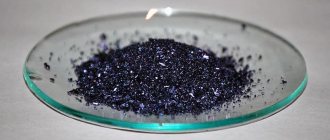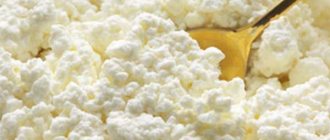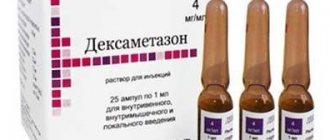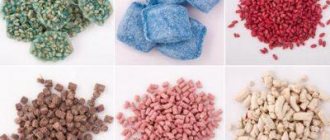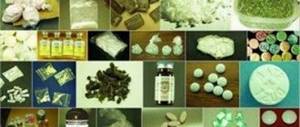Sweet and aromatic watermelon is a favorite treat for children and adults in the summer heat. Watermelon is refreshing and quenches thirst, does not irritate the digestive tract, and therefore you can eat a lot of it without negative health consequences. Nutritionists consider watermelon to be one of the healthiest foods, but nevertheless, it can be dangerous, and cases of watermelon poisoning are not uncommon.
Source: depositphotos.com
Causes of poisoning
Fresh watermelon is aromatic, sweet and tasty, and does not harm the body. But it is better not to eat unripe or overripe. If the product is exposed to the sun for a long time, it will turn sour. When there are cracks or dents, dirt and microorganisms penetrate, and an intestinal viral infection can settle inside.
In melon crops, there is often an increased content of nitrates, which accumulate due to the excessive use of nitrogen fertilizers. They are used to accelerate the growth of fruits and vegetables. When using ammonium nitrate, the proportions must be strictly observed. In small quantities it can activate the growth of fruits and vegetables, but an excess in plants will be harmful and the fruit will be hazardous to health. Once in the body, nitrates cause severe intoxication.
You can get poisoned for trivial reasons. After purchasing, it is enough to rinse the watermelon thoroughly. Harmful bacteria and dirt from the peel will end up inside. Food intoxication will occur if you eat too much pulp. It is especially dangerous for the child’s body.
What are nitrates?
Nitrates are salts of nitric acid, better known to us under the name “saltpeter”. Nitrates are part of the human body, plants and soil and in acceptable concentrations do not cause significant harm to health.
High concentrations of these substances are hazardous to health. Nitrate poisoning occurs more often after eating early vegetables, herbs, watermelons, melons and fruits, so doctors do not advise getting carried away with the fruits of the first harvest.
Nitrate poisoning leads to disruption of the nervous system, heart, digestive organs and tissue hypoxia. However, saltpeter is not the only “culprit” of food poisoning. The fact is that when the peel is damaged, various microbes penetrate into the watermelon, causing an intestinal infection.
Symptoms of nitrate intoxication in watermelon
Symptoms of watermelon poisoning in an adult differ little from ordinary food poisoning. These include:
- Nausea, vomiting.
- Frequent diarrhea.
- Cramps in the stomach.
- Headache.
- Weakness.
- Chills.
- Fever - from 38 to 39 degrees.
Symptoms of nitrate poisoning in watermelon in extremely severe cases can be expressed in a sharp drop in blood pressure, rapid heartbeat, and shortness of breath. There is a sharp lack of oxygen, blue lips and nail plates, and the appearance of convulsions. The appearance of yellowness on the mucous membranes indicates liver damage.
Possible complications
If the disease is not stopped at the initial stage, it will develop further. This will lead to aggravation of the clinic and the appearance of new symptoms.
- Shortness of breath, frequent shallow breathing.
- Paleness of the mucous membranes and skin.
- Darkening in the eyes.
- The appearance of blood in the stool.
If proper assistance is not provided, numerous complications may occur.
- Gastrointestinal bleeding: the appearance of dark vomiting and tarry stools, a sharp drop in blood pressure, tachycardia, pale skin and mucous membranes, darkening of the eyes, loss of consciousness.
- Pancreatitis and pancreatic necrosis, accompanied by acute girdle pain, a rise in temperature up to 40 C, incessant vomiting and diarrhea.
- Liver damage: yellowness of the skin and mucous membranes, bitter taste in the mouth.
- Brain hypoxia due to the ability of nitrates to destroy hemoglobin: cyanosis of the skin and mucous membranes, tachycardia, cold extremities, convulsions.
In case of mild intoxication, you can cope on your own; in other cases, you should consult a doctor.
The danger of watermelon poisoning during pregnancy
Fresh watermelon purchased during the ripening season will benefit pregnant women in the absence of contraindications. It has a beneficial effect on the cardiovascular and nervous systems, and helps replenish iron deficiency in the body. The low calorie content of the product allows you to arrange fasting days.
The first months of pregnancy are an important period. The formation of the child’s organs and systems occurs. A woman's diet should be balanced, containing vitamins and microelements. Watermelon poisoning during pregnancy is dangerous and will lead to serious consequences. It is important to choose a product carefully. If you have the slightest doubt about freshness and quality, put the harmful delicacy aside. Intoxication threatens deviations in fetal development.
In later stages, use the product after consulting a doctor. It will tell you the norm - how many slices you can eat per day. A woman’s organs and systems work at increased speed, and excess stress on the kidneys is harmful. Intoxication in the later stages will provoke premature birth. If you suspect an infectious infection, call a doctor, and drink activated charcoal before arriving.
How not to get poisoned by watermelon?
How not to get poisoned by watermelon
To fearlessly enjoy the taste of these berries, it is enough to follow a few rules:
- Don't buy fruit too early or too late. The best time to consume them is from mid-August to mid-September. Early or late watermelons contain a lot of nitrates.
- Refuse to buy fruits in open pavilions located near the railway. Otherwise, you risk lead poisoning.
- Do not take cracked or cut watermelons. Microorganisms can easily penetrate through a damaged peel. For the same reason, there is no need to ask the seller to cut the peel to check the ripeness of the fruit.
Fulfilling your request, the seller will cut the dirty watermelon with an equally dirty knife. This will be enough for the pulp to deteriorate under the influence of harmful microbes in hot summer weather. It’s better to check ripeness using other methods (dry tail, crunch when squeezing, dull sound when tapped).
- Do not buy watermelons that are too large. Remember that this fetus normally cannot weigh more than 8 kg. If its weight exceeds this norm, then the watermelon was abundantly fed with nitrates.
- Wash the peel thoroughly before cutting to prevent dirt and germs from getting inside.
- Do not eat the pulp right next to the peel, as this contains the highest amount of nitrates.
- Store cut watermelon only in the refrigerator, and no more than a day.
To ensure your safety from nitrate poisoning, you can check the fruit for their presence. To do this, cut a piece of pulp and put it in water. Normally, the water should remain clear or slightly cloudy. If the liquid turns the color of a watermelon, then the fruit contains nitrates.
Watermelon poisoning is very dangerous for humans, as it results in severe diseases of internal organs. Therefore, it is better not to risk your health and not buy early or spoiled fruits. If you notice signs of watermelon poisoning, immediately take detoxification measures and call a doctor.
First aid
If the watermelon looked fresh and the taste did not raise suspicions, but the poisoning occurred, the cause was nitrates. It is necessary to see a doctor; he will decide whether therapy will be carried out in a hospital setting. First aid at home before the ambulance arrives:
- Give the victim a weak solution of potassium permanganate and induce vomiting. A saline solution will do.
- Perform gastric lavage.
- Provide the patient with rest and put him to bed.
- Drink plenty of water.
Severe poisoning is life-threatening. The doctor will take further action.
Beneficial properties of sweet berries
Watermelon can be called a storehouse of useful substances. The valuable components included in the composition allow it to be used in the treatment of many ailments. During the short summer period, it is possible to carry out a preventive course against such dangerous diseases as rheumatism, atherosclerosis, and stabilize the functioning of the gastrointestinal tract, which is especially important in case of poisoning and after intoxication. At the same time, there is no need to overeat on watermelon; it is enough to eat 200-300 grams of juicy pulp five times a day, half an hour before the main meal.
- normalizes metabolism;
- promotes the removal of uric acid salts;
- relieves swelling in cardiovascular and kidney diseases;
- improves the condition of intestinal microflora;
- normalizes blood pressure;
- reduces blood cholesterol levels;
- improves digestion, does not cause flatulence;
- helps the body get rid of toxic substances;
- helps with constipation;
- stabilizes the level of hemoglobin in the blood, activates blood circulation;
- strengthens the immune system;
- imitates saturation without adding extra pounds, therefore it is indicated for obesity.
The sweet berry is used as an effective antipyretic and diuretic. Due to the high content of the antioxidant lycopene, it reduces the risk of cancer. In small doses, watermelon is recommended for sick kidneys, especially for nephritis and glomerulonephritis. The alkaline compounds contained in the composition do not allow potassium, urate, oxalate salts to settle and form sand and stones. Therefore, the berry is an excellent preventative against urolithiasis.
Indicated for people suffering from cardiovascular diseases, as it contains large amounts of potassium and magnesium.
Its benefits are especially felt in hot weather, when valuable microelements are removed from the body along with sweat. Watermelon fully compensates for their deficiency.
Not only the pulp is useful for the sweet berry. The seeds are an excellent anthelmintic, and the peels effectively relieve swelling of various origins.
In case of poisoning, it is used as a cleansing agent that removes toxins. It is also recommended in cases where antibiotics are used in treatment.
They almost instantly develop, multiply and live happily ever after on a cut watermelon. As a result, diarrhea can appear in all household members, and a lot of other problems.
Treatment at home
In case of watermelon poisoning, treatment at home will take several days, depending on the severity. To get rid of toxins accumulated in the body, you will have to use a large volume of liquid and gastric lavage, using enemas and solutions that induce vomiting. After cleansing the stomach, vomiting will stop, and the time for antidotes will come. Treatment consists of using carbon tablets, smecta, polysorb, enterosgel. The products will remove toxins from the body and soothe the gastric mucosa. An antiviral medicine will help you recover faster, the doctor will tell you which one. In case of hyperthermia, the patient is given an antipyretic drug. The patient remains in bed, drinks plenty of fluids, and adheres to a special diet.
Treating babies is more difficult. With mild poisoning, adults recover quickly; in children, the recovery process is slower.
Why does watermelon cause diarrhea?
Many people think that there is nothing in a watermelon except water. However, this berry contains a large amount of vitamins and microelements. The fruit is rich in potassium, sodium, phosphorus and magnesium. The lycopene contained in watermelon gives the flesh a reddish tint.
The healing berry helps remove waste and toxins from the body. Thanks to the antioxidants contained in watermelon, the formation of free radicals can be prevented. Ripe berries improve body tone. 100 grams of pulp contains more than half the daily requirement of magnesium, which is necessary for the normal functioning of the body.
The disadvantage of this berry is its tendency to accumulate nitrates. When consuming such fruits, a person runs the risk of severe poisoning.
Dietary fiber helps lower cholesterol levels. Watermelon has a diuretic and choleretic effect. It is recommended to include it in the diet of patients with heart and kidney pathologies.
This berry is often used to remove kidney stones. It is better to consult a doctor before cleaning. Watermelon is an effective way to get rid of toxins and waste.
It can be eaten even if you are obese, since the berries are considered a low-calorie food.
There are several factors that provoke the development of diarrhea. Sweet berries may contain excess nitrates. The excess amount of chemicals is due to the fact that unscrupulous producers use large amounts of nitrogen fertilizers.
They accumulate in fruits. After eating such fruits, a person begins to experience diarrhea. In this way, the body tries to get rid of toxins.
Fruits grown in violation of technology pose a danger to children. The child's body is not able to fight the strong toxins present in ripe fruits. Diarrhea from watermelon often occurs with high intensity due to severe poisoning.
The reason for the rapid growth of microbes is that watermelon pulp consists of easily digestible carbohydrates.
This is an excellent environment for the growth of various bacteria. When it enters the intestines, an inflammatory process begins. Irritation of the mucous membranes of the digestive organs provokes the development of diarrhea. Infectious diarrhea forces a person to go to the toilet more than 5 times a day.
Sellers often cut the fruit to show buyers its ripeness. Often they completely forget about basic hygiene requirements. The procedure is performed with dirty hands. E. coli can get into the fruit from the surface of the knife.
Watermelon saturated with nitrates can lead to the following symptoms:
- after poisoning, a person experiences diarrhea;
- the patient suffers from attacks of nausea and vomiting;
- there are painful sensations in the abdomen;
- cardiac activity is impaired;
- shortness of breath appears.
When purchasing berries, you must be careful. You should not take a watermelon that has already been cut into pieces, as harmful bacteria may be present in the pulp.
To assess the quality of the product, look at the color of the pulp. A too red hue indicates the presence of a large amount of nitrites. Pay attention to the fibers that are located near the crust of the fruit.
In high-quality watermelon they are white. In watermelon saturated with nitrates, the fibers acquire a characteristic yellowish tint. The correct fruit has a glossy, smooth surface.
In case of excess chemical compounds, compacted yellowish grains are present in the pulp. Drop a piece of watermelon into a glass of water. If the liquid becomes cloudy, then this fruit can be eaten without fear for your health.
When the concentration of nitrates is exceeded, the solution turns red or purple.
To do this, the patient must drink 2 glasses of salted water and induce vomiting. The procedure must be repeated several times. In this way, you can remove the maximum amount of toxins from the body.
The next stage of treatment is taking adsorbents (Enterosgel, Smecta). You should not take them at the same time as other medications. Adsorbents bind toxin molecules and remove them from the body naturally.
With diarrhea, a person suffers from dehydration. To compensate for fluid loss, it is necessary to take rehydration medications (Hydrolit, Regidron).
Nitrites disrupt the transport function of the blood. After eating watermelon grown using chemicals, a person experiences hypoxia. Lack of oxygen affects all body systems.
To ensure that there are no harmful compounds in watermelon, each batch must be tested. But in spontaneous markets, products are not checked. There is a high probability of purchasing dangerous products that can cause serious harm to the body.
It is better not to feed children under 2 years of age watermelon. For children from 3 to 6 years old, 100-150 grams of sweet pulp per day is enough. And this is provided that the watermelon is of high quality.
In a sweet environment, harmful bacteria multiply quite quickly. After eating such fruits, a person begins to experience diarrhea.
Consider the ripening time of watermelons. Remember that the fruits of this berry ripen only at the end of August. Earlier supplies are grown using chemicals.
We recommend reading: Gastroesophageal reflux disease: causes, symptoms, treatment
Is it possible to eat watermelon if you have food poisoning?
Food intoxication occurs for various reasons. Poor health can be caused by eating stale food or heavy alcohol intoxication. Any treatment is identical to watermelon poisoning. The list includes gastric lavage, inducing vomiting, using adsorbents, drinking large amounts of liquid, and diet.
After intoxication, the patient has no appetite. A healthy drink would be tea with lemon. Oatmeal, which does not irritate the stomach, will help. Fruits and vegetables are consumed with caution. Despite the benefits, the stomach is not ready for such food. It takes time to restore function.
But adults are not prohibited from eating watermelon, provided that it is 100% fresh and of high quality. It helps remove toxins from the body and provides vitamins. But you need to use it within reasonable limits. 2-3 pieces a day is enough.
Consequences and prevention
What consequences are possible after watermelon poisoning?
Such intoxication can lead to intestinal dysfunction and disruption of its microflora. An overdose of nitrates causes disruption of the functionality of many systems, falling into a coma and death.
Watermelon intoxication can be avoided by following simple preventive rules.
Rules:
- It’s easy to check watermelon for the presence of nitrates - put a piece of pulp into the water, if the color of the liquid turns pink, it means that the berry contains harmful substances, it is recommended to discard such a product.
- Nitrates accumulate near the rind, so you should not eat the watermelon to these limits.
- When purchasing a watermelon, it is better not to cut it to avoid bacteria getting inside.
- Before eating, watermelon should be washed well.
- Do not buy watermelons with cracked rind or fibrous flesh.
- Watermelon can be stored in the refrigerator for no more than twenty-four hours.
Watermelon poisoning can happen to anyone. It is recommended to follow the rules of prevention before purchasing and eating, and if unpleasant signs appear, contact a medical facility.
Diagnostics
In the hospital, the patient will undergo an additional examination, which will establish an accurate diagnosis and the presence of pathologies:
- The blood is given for a general analysis, which will show the presence of anemia and inflammatory processes.
- Urine is submitted for general analysis - kidney pathology is examined after interaction with nitrates.
- An ultrasound examination of the abdominal cavity will show the internal state of the affected organs and the presence of abnormalities in structure and function.
- Gastroscopy is indicated in the presence of black stool and vomit to exclude internal bleeding.
- Blood biochemistry will be required to study the loss of minerals and malfunction of the kidney and liver cells.
It is advisable to preserve the watermelon that caused the poisoning. It will be required for laboratory testing - this will help to accurately establish the diagnosis.
Danger to child
Child poisoning after a slice of watermelon is more complex and painful than in an adult. This is due to the fact that in a child’s body there is a small amount of blood, and the concentration of nitrites acts in the same way as in an adult body. It is prohibited for babies under one year old to eat, and it is also not advisable to abuse melon products for nursing mothers and during pregnancy. A baby who is two or three years old may eat no more than one hundred grams of berries. After this, it is necessary to observe his reaction.
If a child has watermelon poisoning, symptoms appear within two days after the baby eats the product: nausea, diarrhea, vomiting, dizziness, high fever, cyanosis develops, and heart and lung failure occurs.
Dangerous botulism
Poisoning during pregnancy with botulinum toxin can be fatal. At the slightest suspicion of the appearance of this infection in a woman’s body during pregnancy, she must be hospitalized immediately. For this infection, the leading methods of cleansing the body are used:
- gastric lavage;
- antibotulinum serum;
- enema;
- sorbents.
In advanced forms, when nothing brings a positive result, the patient is prescribed penicillin antibiotics. For example, if there is a suspicion of pneumonia. Based on the medical results of checking the condition of the body, medications are prescribed to enhance and strengthen the immune system.
In case of unstable breathing, it is treated with oxygen, namely its administration under high pressure. If there is a need, a tube is inserted into the trachea, but this option occurs only if the patient requires ventilation.
Risk for baby
A question that torments many expectant mothers: “What is the danger of poisoning during pregnancy?” Over a long period of time, complications may appear that will leave a mark on the child:
- Poor oxygen supply.
- Detachment of the placenta.
- The onset of labor ahead of schedule.
- Slow development of the unborn child.
- Bleeding in the uterus.
- Discrepancy between the baby's weight and term.
But don’t worry ahead of time, this is only in the worst case scenario. In a difficult situation, which is accompanied by complete intoxication of the body in combination with pathologies when bearing a child.


